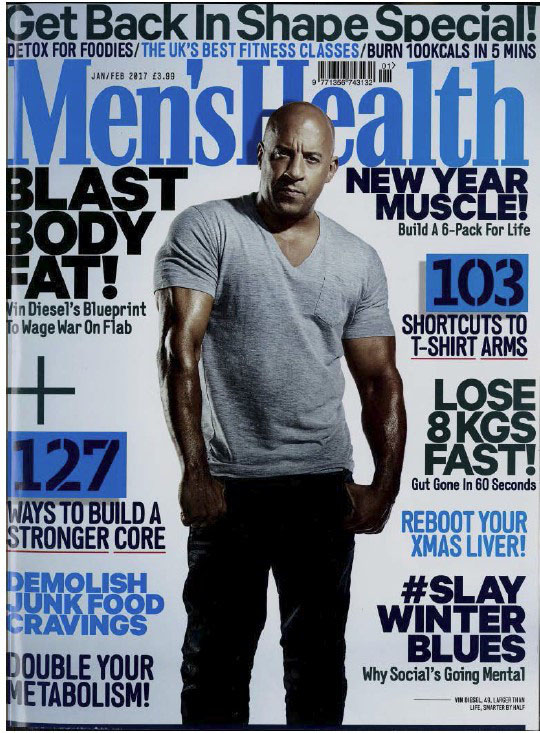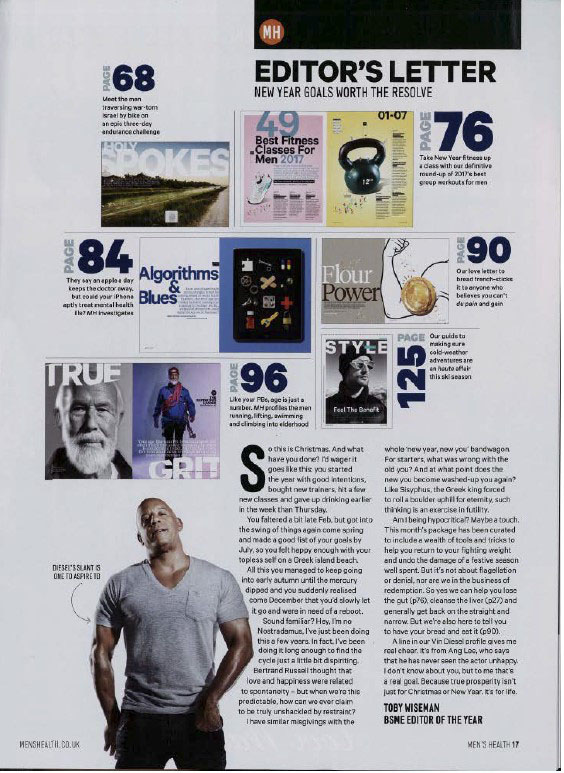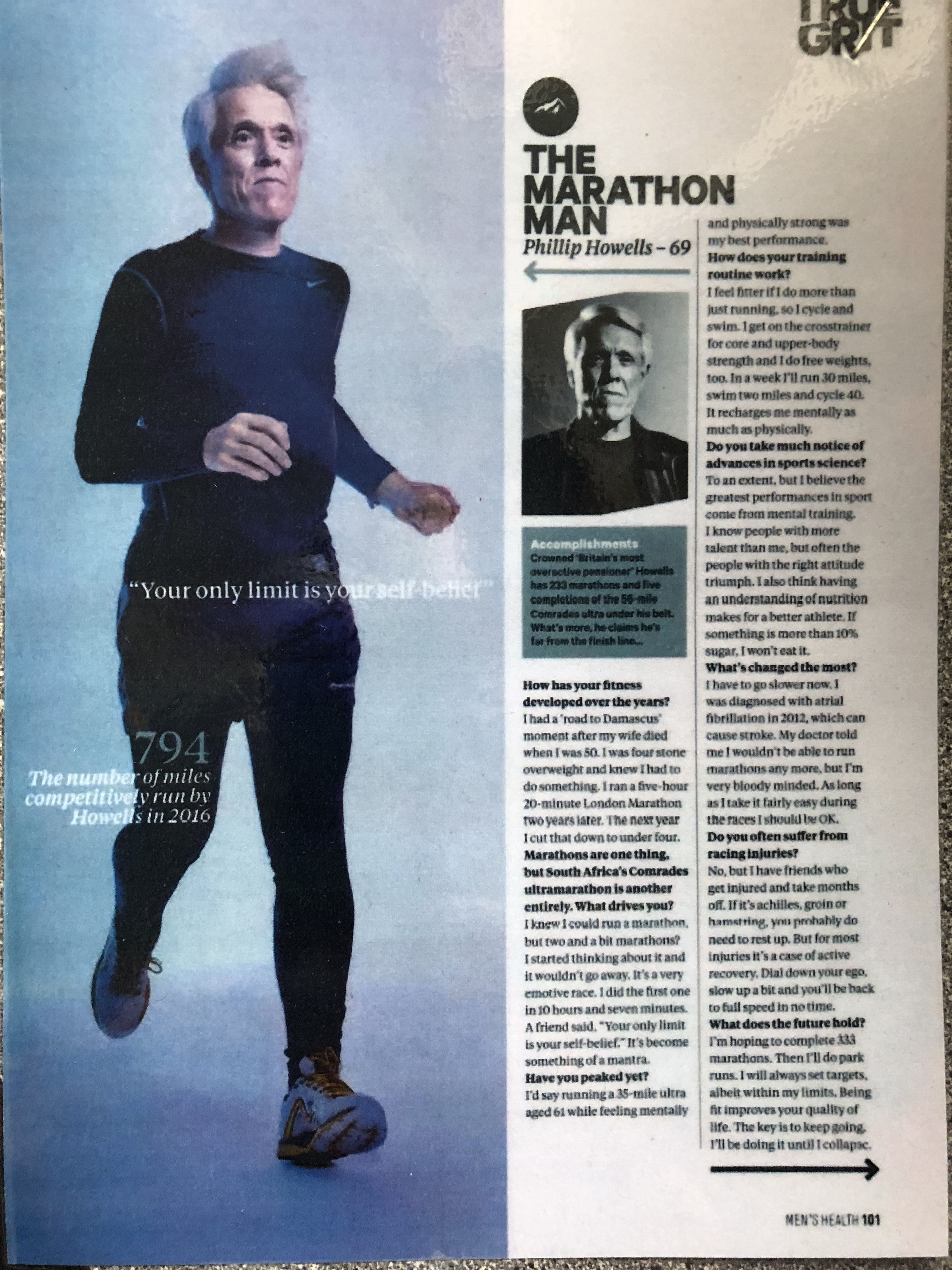
Print Language: The dominant signifier is a celebrity called Vin Diesel. He is looking down towards the viewer – connotating towards feelings of intimidation and superiority/dominance. The symbolic use of the shades of colour blue is stereotypical to the gender of a man creating a reactionary representation of a masculine magazine. The font is blocky and bold in order to come across stronger and more masculine. The semantic field of language used demonstrates what it is to be a man and alludes to strength. E.g. kill, demolish, blast. There is also use of a hashtag to link to social media and perhaps trying to access a younger demographic or to link with the modern digital world, in order to make it more accessible.
Representation: The Magazine print is a reactionary representation of men as it uses stereotypical semiotics that are connotated with masculinity. This connotates to Judith Butler’s theory of how we view gender in a “binary fashion”. She believes that gender is fluid.
Audience: The use of a celebrity is more appealing to the audience- connotating to Laswell’s Two-step flow communication model by influence of opinion leaders. The target audience is men who want to invest on their selves and take care of their body. The audience will also be men who are typically wealthy and have the money to afford luxuries. This is aimed at a range of men 15+.
Industries: Men’s Health was published by Hearst – the worlds largest magazine brand. Started by Mark Bricklin in the US in 1986 focusing on topics such as fitness, nutrition, relationships, travel, technology, fashion and finance. These magazines reach over 71 million readers worldwide. The magazine was criticised due to its focus on fitness which can increase men’s anxieties about their bodies and making them more prone to eating disorders and compulsive over – exercising. In 2004 Men’s Health started putting pictures of celebrities on the front cover with their shirts on. This is due to them promoting an unattainable model of a man. The price is $4.99 per magazine (monthly) or $28 for the year.
Since 2000, Men’s Health has been nominated for 17 National Magazine Awards which are administrated by Columbia University’s Graduate School of Journalism and presented by the American Society of Magazine Editors. Won both Editor’s Choice and Reader’s Choice for the 2016 Hot List
Costs over $200,000 to feature an ad on the front cover. 708 men buy Men’s Health and 365 women buy men’s health.
The British edition of Men’s Health was founded in 1995. In March 2006, one of the UK writers, Dan Rookwood, appeared on the cover having transformed his body shape while working at the magazine.

- Links to online website ‘menshealth.co.uk’, encouraging readers to move online to view the magazine- more accessible. Also prevents from going outdated
- Reactionary representation of exercise, strength and fitness through links to articles within the magazine on the contents page. This is shown through image signifiers such as pictures of trainers, weights etc. Creating this unrealistic ideal that to be a ‘real’ man you must be physically at top performance. Limited radical representation through the inclusion of men of different ages and races.
- Typical male characteristics displayed through linking to an article with a picture featuring spanners, lock and key, cogs – implying men are good at fixing things or building things.

- Q+A style interview signposted through bold font for question and different for answers.
- Iconic sign of a arrow, clearly marking that he is the topic of the conversation.
- Use of alliteration “Marathon Man” making it more memorable, eye catching and easier to digest. Also has similarities with language choice alluding to this sense of a powerful ability e.g “super man”
On pages 10-11 of Men’s Health the car provides escapism and self esteem which applies to Katz’s theory of uses and gratifications and contrasts between the social and personal needs. Also relating to a typically masculine interest/hobby.
The School of Life produced a video called How to be a Man, while this is not an academic theory it nevertheless presents two versions of masculinity; the warm man and the cool man. It is possible to identify these two versions in Men’s Health, thus supporting Gauntlett’s notion of fluid, negotiated, constructed, collective identity.
For example, on the front cover of Men’s Health, Vin Diesel is standing with his posture straight and his eyeline directed down towards the viewer. Here he is demonstrating the cool man which is typically a relaxed and confident version of masculinity.
Exam Prep
- Hearst UK’ is a publishing organisation (conglomerate) which publishes 21 magazines in the UK, including; ‘ELLE’, ‘Good Housekeeping’, ‘Women’s Health’ as well as ‘Men’s Health’. It is owned through horizontal integration by ‘Hearst Communications’ (an American mass media company based in New York that is over 130 years old) Women’s Health was founded in 2005 as a branch of Men’s Health. It currently has a higher circulation than Men’s Health – 96,350, (dec 2021)
- Started by Mark Bricklin in the US in 1986 focusing on topics such as fitness, nutrition, relationships, travel, technology, fashion and finance.
- “More than 21 million readers across social and digital platforms”
- ‘MH-18’ a spin-off magazine of Men’s Health was produced in August 2000 to try to engage with a teenager demographic. This links to David Hesmondhalgh idea that media companies need to find ways to find new audiences, whilst keeping the loyalty of avid readers as a way of reducing risk.
- Social Media: 8.9 M – Facebook, 4.4M – Twitter, 1.7M – Instagram.
- Their consumer profile states that 67% of their readers are married, engaged or with a partner. 66% of the readers are college educated. The consumer profile also highlights that 5.3 Million of readers are adventure/ thrill seekers and 11.4 Million aspire to have a healthy lifestyle.
- Print sales fell by 42% from 23.8m to 13.9m between 2010 and 2017.
Statistics from Jan-Dec 2021
- An average of a 89,811 circulation per issue (how many copies distributed)
- 26% of copies were purchased digitally
- 74% of copies were purchased as print
